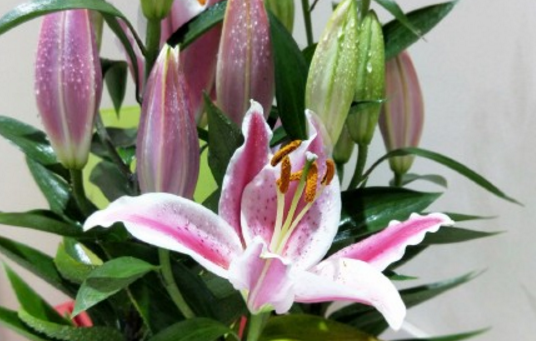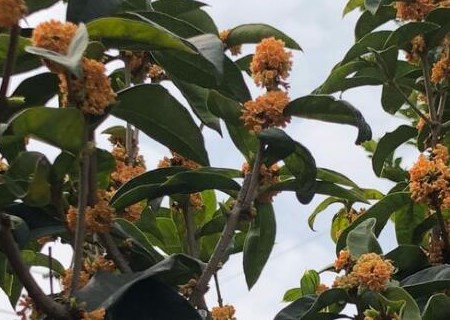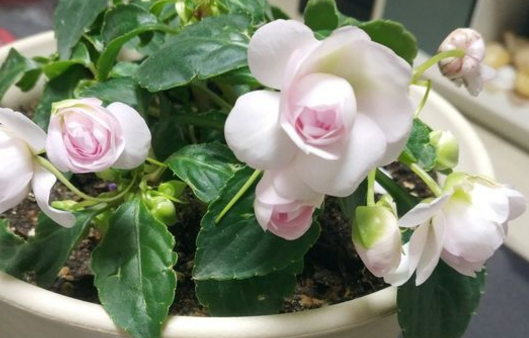What are the cultivation methods of maryland-family deer onions? What's the difference between changing brocades? How to reproduce?
Deer onions like to grow in sunny and humid environments, such as shady hillsides, rocks and stone cliffs, so what are the cultivation methods? The difference between changing flowers and changing brocade flowers? How do you breed? It is understood that deer onions prefer light, which is suitable for growing in a humid environment. But it can withstand semi-overcast and drought. Deer onions can still be cold-resistant, and their vitality is very tenacious. He has a low demand for soil, fertile and well drained.

First, what are the cultivation methods of deer onions?
1. Open field cultivation of deer onions.
Open field cultivation is a kind of deer onion cultivation, which is cultivated in places with high topography and good drainage.
The bulbs on the seed bulbs of deer onions are taken off to propagate, and the main bulbs are trimmed to dry their roots before planting. Keep the plant spacing around 15cm, cover with soil, and be careful to expose the top of the ball.
Note that when cultivated in the open field, it is necessary to apply reasonable fertilizer to keep the plant growing and blooming. When dormant, dig up the seed ball and put it in the greenhouse to sleep. Keep outdoors at about 5 ℃, dry and ventilated.
2. Cultivation of deer onion in greenhouse.
Potted green onions in greenhouse generally choose bulbs that can blossom for about 3 years. When potted, one is usually planted in a flowerpot, or 4 trees are planted in a large pot. When planting, it is usually planted shallowly, and the ball should be exposed to the soil.
In the pot, we should pay attention to watering to keep moist, fertilization is once every semimonthly. Change the pot in time and water less during the dormant period of the plant.
3. Exposed basket cultivation
Basket cultivation means that balls can be planted in one basket, usually 16. The deer onion planted in this way is more convenient to transplant, and the maintenance is relatively simple. Pay attention to weeding in time.
Second, the difference between changing brocade flowers?
1. The difference between the petals of Jinhua and deer onions
The brocade kaleidoscope is about 1.5 cm long, the whole flower is purplish red, the top is blue, the petal edge is not wrinkled, the flower is cup-shaped, the petal is wide and the stamens are short; the deer onion kaleidoscope is about 2.5 cm long, the whole flower is purplish red, and the petal edge is slightly wrinkled, similar to a small lily. The petals of deer onions are larger than those of brocade flowers. The top is a change of brocade flowers, and the bottom is deer onions.
2. The difference between Jinhua and deer onion bulbs.
The bulbs of Jinhua and deer onions are oval, but the bulbs of brocade flowers are obviously smaller than those of deer onions, the diameter of which is about 5 cm, and the bulbs of brocade flowers are about 3 cm.
3. The difference between the leaves of Jinhua and deer onions
Researchers on the anatomy of the brocade flower and deer onion plant found that, from the side observation, the leaf of the brocade flower is relatively flat compared with the deer onion, and the V angle is relatively small. Change brocade flower leaves in early spring, deer spring onions leaves in autumn, grow to about 8 centimeters, immediately wither. The top picture shows the brocade flower leaf, and the bottom picture shows the deer onion leaf.
Third, how to reproduce?
1. Split-plant method
The method of dividing plants is the simplest method for the reproduction of deer onions. Generally speaking, it is necessary to split the shallot during the period of dormancy or after the bloom of the scallion. the specific way to split the plant is to dig out the whole plant, and then cut off the offspring that grow near the mother plant to plant it. It will probably produce beautiful flowers the next year.
2. Scale cutting and plant regeneration
Generally speaking, it can be done once in about four years. First put the small bulb of deer onion into the soil about five centimeters deep, then draw a cross from the bottom to the top with a knife and cut it longitudinally, cut to about 3/4, and finally bury the bulb in the soil. After a period of time, you can see that many spherical seed plants grow in the incision of the bulb, and then these small balls can be removed and planted.
Time: 2019-03-17 Click:
- Prev

Can I plant sweet-scented osmanthus trees in the yard? What are the methods of potted culture? What's the use?
Sweet-scented osmanthus fragrance, recently sweet-scented osmanthus has been in bloom, walking in the street sweet-scented osmanthus think of pervading the street, like very much, some people want to plant sweet-scented osmanthus in the yard, then do you know that sweet-scented osmanthus trees can be planted in the yard? What are the methods of potted culture? What's the use? Can I plant sweet-scented osmanthus trees in the yard?
- Next

What are the culture methods and precautions of African impatiens in disease-free order? Is it poisonous? Can I keep it at home?
African impatiens like a warm and moist environment, which are beautiful potted plants and open-field flowers in the garden at present, so what are the breeding methods and matters needing attention of African impatiens? Is it poisonous? Can I keep it at home? It is understood that African impatiens prefer warmth and require higher temperatures in winter.
Related
- Fuxing push coffee new agricultural production and marketing class: lack of small-scale processing plants
- Jujube rice field leisure farm deep ploughing Yilan for five years to create a space for organic food and play
- Nongyu Farm-A trial of organic papaya for brave women with advanced technology
- Four points for attention in the prevention and control of diseases and insect pests of edible fungi
- How to add nutrient solution to Edible Fungi
- Is there any good way to control edible fungus mites?
- Open Inoculation Technology of Edible Fungi
- Is there any clever way to use fertilizer for edible fungus in winter?
- What agents are used to kill the pathogens of edible fungi in the mushroom shed?
- Rapid drying of Edible Fungi

